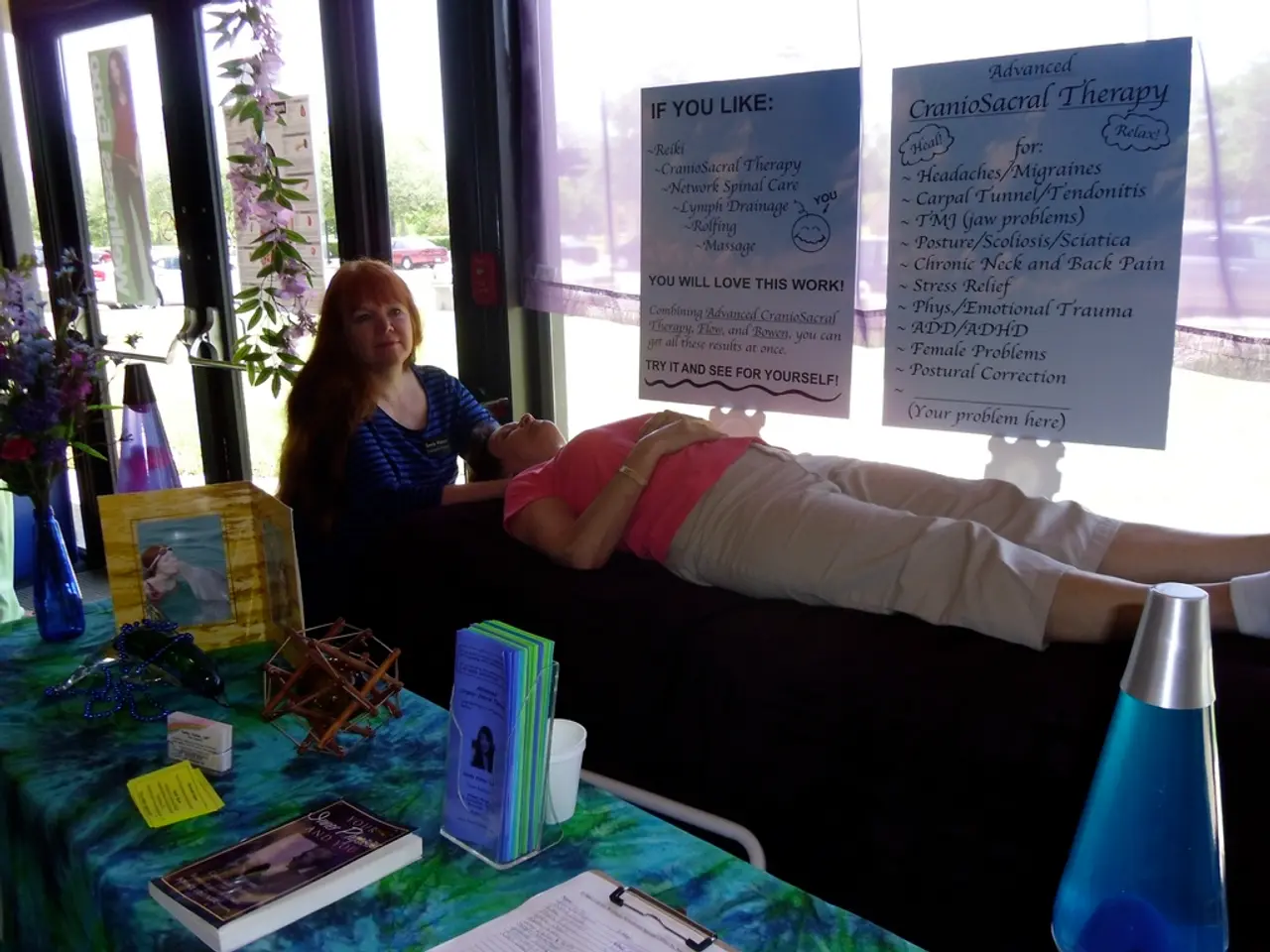Anxiety Treatment Methods: Advantages, Consequences, and Further Information
Transcranial Magnetic Stimulation (TMS) Offers Promising Treatment for Anxiety Disorders
Transcranial Magnetic Stimulation (TMS) is emerging as a promising and effective treatment for anxiety disorders, particularly Generalized Anxiety Disorder (GAD) and Post-Traumatic Stress Disorder (PTSD). This non-invasive, medication-free procedure uses magnetic fields to alter activity in specific areas of the brain involved in regulating mood.
For PTSD, TMS primarily targets brain circuits related to mood regulation, fear response, and memory processing, notably the prefrontal cortex and the amyggdala. Research indicates that TMS can reduce amygdala hyperactivity, linked to fear and emotional response, and strengthen prefrontal control, leading to decreased intrusive thoughts, emotional reactivity, and overall PTSD symptoms. Particularly for veterans and treatment-resistant cases, TMS combined with psychotherapy has shown greater symptom improvement than either treatment alone.
Regarding GAD, TMS applied to the dorsolateral prefrontal cortex (DLPFC)—a brain region implicated in emotional regulation—has demonstrated specific therapeutic effects on anxiety symptoms. A recent systematic review and meta-analysis concluded that repetitive TMS (rTMS) targeting the DLPFC significantly improves anxiety symptoms and cognitive function, although more research is needed to optimize stimulation parameters.
TMS may enhance neuroplasticity, making the brain more receptive to other treatments like psychotherapy and medications such as SSRIs, thus improving overall efficacy. Accelerated TMS protocols, like the SAINT protocol, show potential to speed symptom relief by delivering multiple sessions per day, guided by advanced brain imaging to accurately target dysfunctional regions.
Side effects are generally mild and transient, such as localized discomfort or headaches, making TMS a well-tolerated option especially for patients intolerant to medications. However, it's important to note that TMS poses a risk of seizure, although it is rare.
In a dTMS session, individuals will wear a special helmet, which produces magnetic fields. People will be able to resume their everyday activities after a dTMS session. During a dTMS procedure, specialized coils, called H coils, deliver pulses that reach around 4 centimeters below the skull. The pulses from rTMS usually reach up to 2 inches into the brain and use a magnetic field that has a similar strength to an MRI.
Further, large-scale controlled trials are needed to determine the effectiveness of TMS in treating anxiety. While TMS may be an effective treatment method for GAD and PTSD, more research is necessary to establish standardized treatment protocols, clarify long-term efficacy, and optimize stimulation parameters for anxiety disorders beyond PTSD.
Science in health-and-wellness continues to explore the mental-health benefits of Transcranial Magnetic Stimulation (TMS), particularly for individuals with Generalized Anxiety Disorder (GAD) and Post-Traumatic Stress Disorder (PTSD). TMS research suggests it can reduce am Amygdala hyperactivity linked to fear and emotional responses and strengthen prefrontal control, leading to decreased intrusive thoughts and overall symptom improvement in PTSD patients. For GAD, TMS applied to the dorsolateral prefrontal cortex (DLPFC) has shown specific therapeutic effects on anxiety symptoms, potentially enhancing neuroplasticity and improving overall efficacy of other treatments like psychotherapy and medications.




